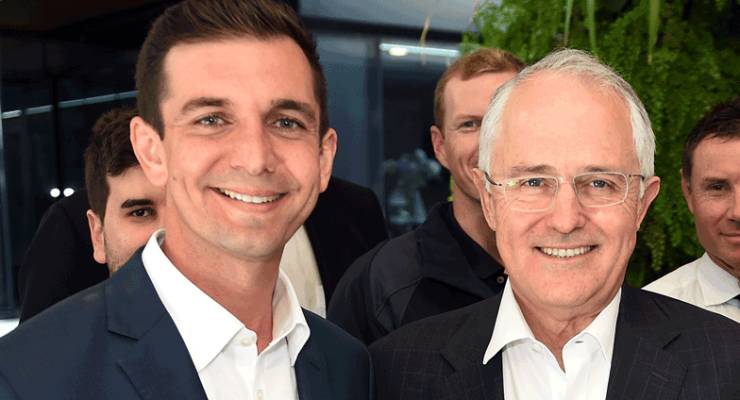
Much has been said over the past fortnight about Prime Minister Malcolm Turnbull’s diminished stature following a lacklustre campaign performance and the effective failure of his double dissolution election strategy.
Upon launching his grand plan for a July 2 election with the prorogation of Parliament in March, Turnbull anticipated that the boldness of his strategy would break the circuit of his declining poll numbers; that voters willing to try their hand with Labor when responding to opinion pollsters would prove more reticent when playing for keeps on election day; and that he would have Opposition Leader Bill Shorten’s measure over the course of a long election campaign.
None of that has been borne out, and Turnbull’s party colleagues have good cause to conclude that his predecessor, whatever his failings, would have been more effective in tapping into voters’ primal emotions at the sharp end of the campaign.
That the Liberal campaign was lacking in conviction and failed to connect with strategically important components of the electorate can hardly be doubted.
However, that doesn’t mean we should lose sight of the fact that Turnbull has, in fact, won an election, an achievement that is in no circumstance as easy as it looks.
[Voting reform brought in a Senate as unmanageable as Australia itself]
The muted response to Turnbull’s win presents an interesting contrast to John Howard’s similarly unconvincing re-election when he first went to the polls as prime minister in 1998.
Howard’s haul of 80 seats was a little better than the 77 Turnbull will lay claim to if Ewen Jones retains his paper-thin lead in Herbert through the close of counting, but this was largely owed to good fortune — Labor won the two-party vote by 51.0-49.0 in 1998, whereas the result this time should settle at around 50.5-49.5 in favour of the Coalition when all the votes are in.
The party room and the press gallery were disposed to cut Howard some slack, given the boldness he had shown in taking a goods and services tax to the people.
Flattering post-election narratives duly took hold about marginal seats stocked with “Howard’s battlers”, who had kept faith with a prime minister who recognised their aspirations and shared their patriotism.
Howard’s achievement was typified by three seats on the western fringe of Sydney — Macquarie in the north, Macarthur in the south and Lindsay in the centre — that fell to the Liberals in the 1996 landslide, then made the substantially shorter list of seats that stayed true in 1998.
But it was a very different story a fortnight ago, when all three of the seats moved to Labor with a force that few saw coming.
The resulting trio of Liberal defeats were part of a wider pattern of failure in new suburbs on the metropolitan fringes, which produced swings well over double the national average in the northern Brisbane seat of Longman, where Wyatt Roy was defeated; McEwen in Melbourne’s north, despite Labor’s apparent vulnerability there over the Country Fire Authority issue; Wakefield and Kingston in Adelaide’s north and south, which were Liberal-held a decade ago but now have double-digit Labor margins; and the new seat of Burt in southern Perth, which recorded the electorate’s biggest two-party swing.
Labor’s record of failure in such electorates throughout the Howard years encouraged a belief among some in the party that it could not win elections unless its policies passed a “Lindsay test” — a notion that’s looking especially dubious now that Turnbull has comprehensively flunked the test, yet still won a majority.
To observe how he was able to manage this, we need to flip the coin and look to seats where Howard failed and Turnbull succeeded.
[Poll Bludger: crunching numbers for the new Senate]
Some of the seats in question reflect long-term regional change, such as McMillan in eastern Victoria and a number of once-marginal seats in Western Australia where Labor hasn’t been competitive for some time now.
The more telling results are from established suburbs in reasonably close proximity of big city central business districts, where the Liberals secured decisive victories in Sydney and Brisbane.
Two seats in Sydney’s inner west and middle south, Reid and Banks, had never been in conservative hands until the city-wide washout in 2013, and ought to have been low-hanging fruit for Labor this time around.
In fact, both the Liberal victors from 2013 were re-elected, with a favourable swing of 1.5% in the case of Craig Laundy in Reid.
The electorate of Brisbane, which Labor held without interruption from 1980 to 2010, was retained by the Liberal National Party with a swing in their favour of 1.7%, despite the retirement of sitting member Teresa Gambaro.
Brisbane’s boundaries are more favourable for the Liberals now than they were in John Howard’s time, but the seat would most certainly have been won by Labor in 1998.
Not far to the east, LNP member Ross Vasta suffered only a negligible swing in his seat of Bonner, which didn’t exist in 1998 but would have been won by Labor if it did.
In the inner south of Brisbane, promising Labor member Terri Butler was run close by a 1.4% swing to the LNP in Griffith, where she replaced Kevin Rudd at a byelection in early 2014.
While the trend to the Liberals in inner-urban areas didn’t decide any results in the other capitals, it can be discerned easily enough by observing the pattern of swings — and also through a deeper statistical analysis of polling booth results that you can read all about on my blog.
This analysis shows that the demographic variable that best predicted swings to the Coalition was educational attainment, while Labor did best in younger areas with large numbers of mortgage payers, both features being characteristic of the suburban fringes.
Turnbull has been heavily criticised for alienating Howard’s erstwhile battlers with his emphasis on management-speak about agility and innovation, which raised many more fears about job security than hopes about new opportunities in a dynamic economy.
At the same time though, it must be allowed that the modern and moderate image projected by Turnbull did hit home with other cohorts, and in doing so secured seats that would not otherwise have been won — certainly not by Tony Abbott, who continues to be out-rated by Turnbull in preferred leader polls by a factor of almost three to one.
*To read more from Crikey‘s William Bowe, visit The Poll Bludger








An article about seats that Abbott would’ve won that Turnbull couldn’t would be extremely brief. Perhaps one line.
A seat at his mum’s for dinner.
Warringah?
Claiming to know who cohorts vote for is ridiculous.
As usual this was a Billy Bowe blurb that told no one with half a brain anything they didn’t know and wildly contradicts his previous magisterial pronouncements.
Why does Crikey give him space?
Steady diet of ‘we wus robbed’ from the Talcum fellow travellers.
William…did no one tell you that the Labor party won 14 or 15 seats? It’s not over yet!!